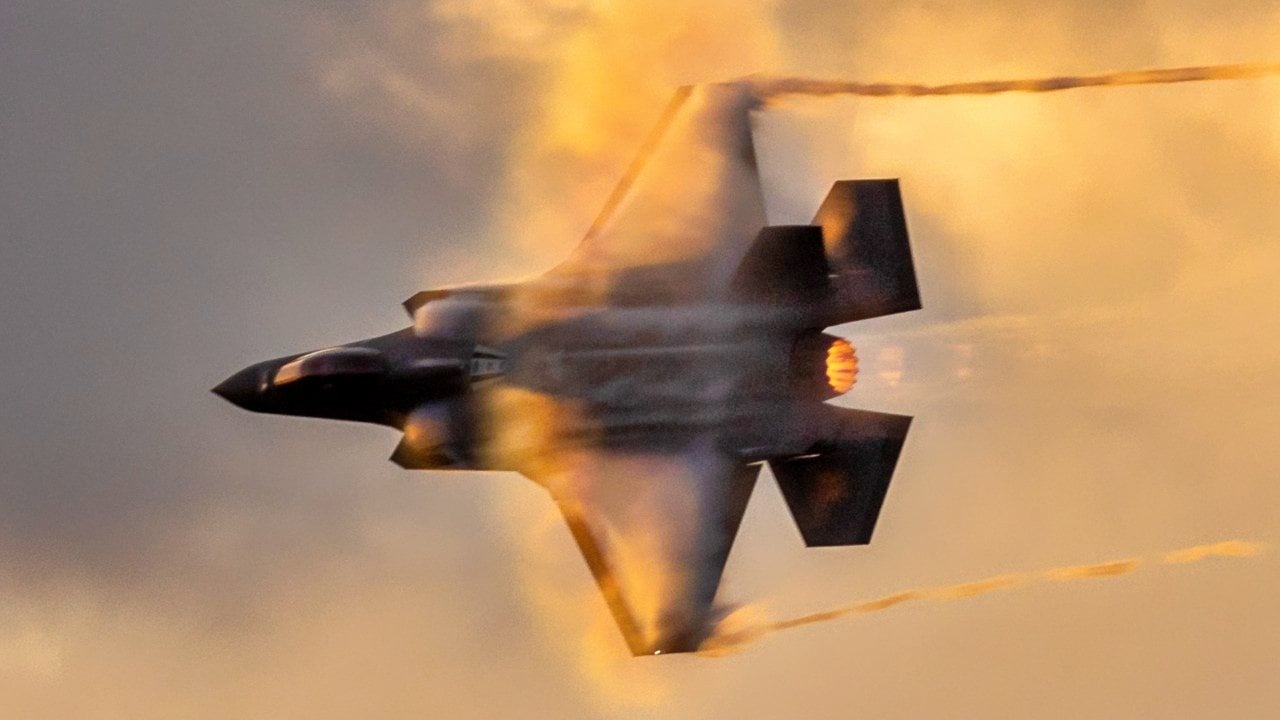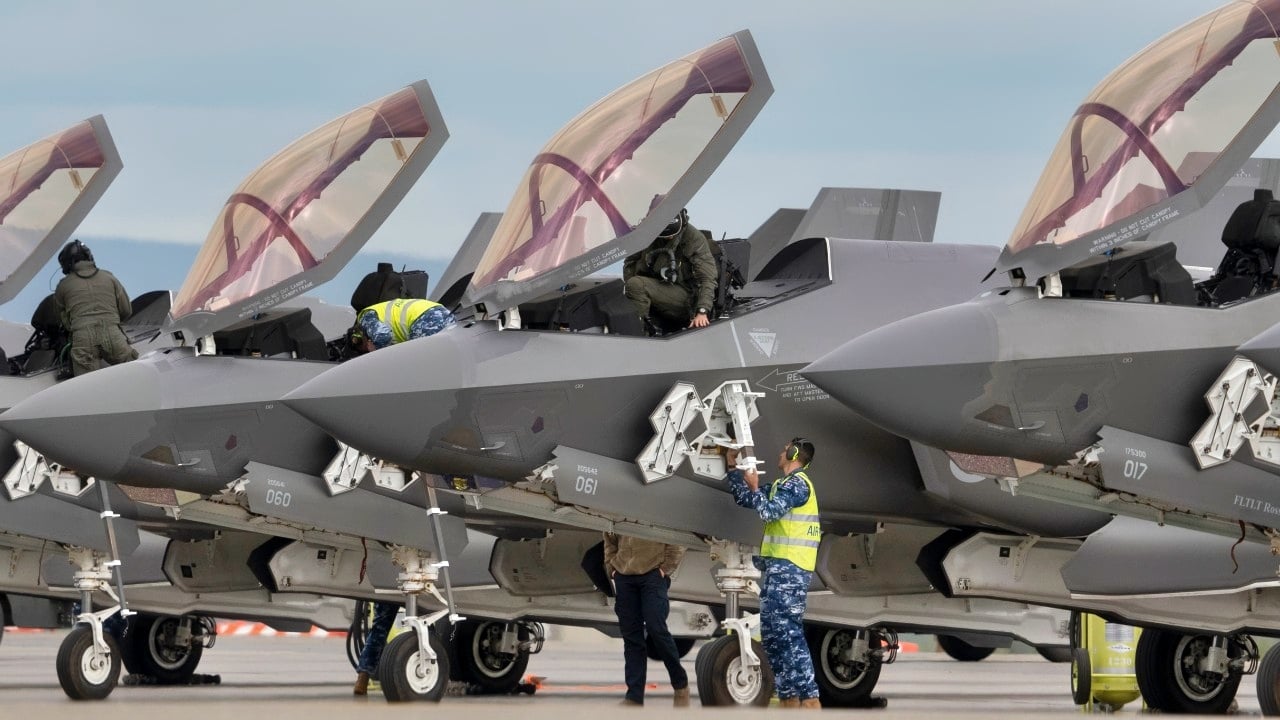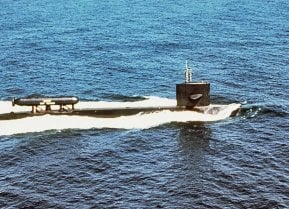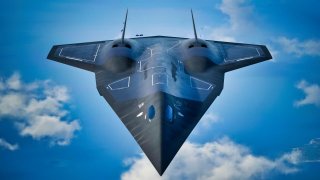Russia's MiG-41 Will Never Compete with the F-22 and F-35 Fighters
Russian aerospace firm Mikoyan is developing the PAK DP/MiG-41, a sixth-generation stealth interceptor and fighter aircraft expected to make its first flight in 2025. Intended to replace the aging MiG-31, the MiG-41 aims to incorporate advanced stealth technologies, variable-cycle engines, long-range weapons, and enhanced human-systems integration, potentially including remote or autonomous control.
What You Need to Know: Russian aerospace firm Mikoyan is developing the PAK DP/MiG-41, a sixth-generation stealth interceptor and fighter aircraft expected to make its first flight in 2025. Intended to replace the aging MiG-31, the MiG-41 aims to incorporate advanced stealth technologies, variable-cycle engines, long-range weapons, and enhanced human-systems integration, potentially including remote or autonomous control.

-Despite ambitious specifications, skepticism remains about Russia’s ability to mass-produce such an advanced platform, especially given challenges in developing fifth-generation jets.
-The MiG-41’s projected features align with sixth-generation expectations, but experts doubt its feasibility, suggesting it may never progress beyond the drawing board.
Russia’s MiG-41: Ambitious Sixth-Generation Fighter or Overhyped Dream?
Russian aerospace firm Mikoyan’s latest fighter project is known alternately as the PAK DP or the MiG-41. The PAK DP designation is an acronym for Perspektivny aviatsionny kompleks dal’nego perekhvata, which translates to “prospective air complex for long-range interception.” As the name implies, the PAK DP/MiG-41 will be an interceptor aircraft, but also a fighter. The stealthy PAK DP is expected to make its first flight in 2025.
What We Know: Not Much on PAK DP or MiG-41
As is typically the case with Russian aviation projects, the West knows little about the MiG-41.
The new jet will replace the MiG-31, and it is considered a sixth-generation project. But the Russians have struggled enough to mass-produce a fifth-generation jet, leaving some observers skeptical that Russia can pull off a sixth-generation aircraft. Most seem to think this plane will never make it into production, let alone, undergo any sort of test flight.
We can deduct what Russia expects from the PAK DP or MiG-41 based on the general parameters that define a sixth-generation design. Advanced stealth airframes and avionics should be included, as should advanced variable-cycle engines with high thrust and cruise control. The airframe should equip increased-range stand-off and Beyond Visual Range weapons, and it should allow for enhanced human-systems integration. There should be an option for remote or autonomous control.
In short, sixth-generation platforms are expected to feature an ambitious slew of features that the Russians will be hard-pressed to obtain. To date, no one has created a sixth-generation platform. Only three nations (Russia, China, and the U.S.) have even fielded a fifth-generation platform. So Russia’s plan to first fly the PAK DP/MiG-41 in 2025 might be overly optimistic.
If one had to speculate, and looking across many Russian dreams of military hardware, there is a strong change this place never leave the drawing board.

Design Speculation
The design specifications for the MiG-41 are understood to have been finalized in 2019. MiG’s Director General, Ilya Tarasenko, said the new jet will reach speeds in excess of Mach 4, with cruising speeds around Mach 3. It will equip an anti-missile laser and be able to fly at near-space altitudes. Tarasenko also said the new jet will feature an unmanned version.
The aircraft, as described, would make for a formidable interceptor.
An Advanced Engine for MiG-41
The PAK DP/MiG-41 is expected to use an upcoming version of the Saturn AL-51 engine that is currently in development for use with improved variants of the Sukhoi Su-57 fifth-generation fighter.
The Saturn AL-51 is an afterburning low-bypass turbofan engine that first ran in 2016. The architecture of the engine features two shafts and a three-stage fan driven with a low-pressure turbine, as well as a five-stage high-pressure compressor driven with a single-stage high-pressure turbine. The Saturn AL-51 also features glass-fiber plastic inlet guide vanes and convergent-divergent nozzles that use serrated flaps to reduce its radar signature.
The new engine will offer a 19% higher thrust-to-weight ratio over its predecessor; estimated thrust will be 37,500 pounds with afterburners engaged. In addition to the Su-57 and the PAK DP, the Saturn AL-51 is expected to be used in the upcoming Su-75 Checkmate light tactical fighter.
The Russians are no doubt racing the Americans to field a sixth-generation fighter.
About the Author: Harrison Kass
Harrison Kass is a defense and national security writer with over 1,300 total pieces on issues involving global affairs. An attorney, pilot, guitarist, and minor pro hockey player, Harrison joined the US Air Force as a Pilot Trainee but was medically discharged. Harrison holds a BA from Lake Forest College, a JD from the University of Oregon, and an MA from New York University. Harrison listens to Dokken.
All images are Creative Commons and/or Shutterstock.


